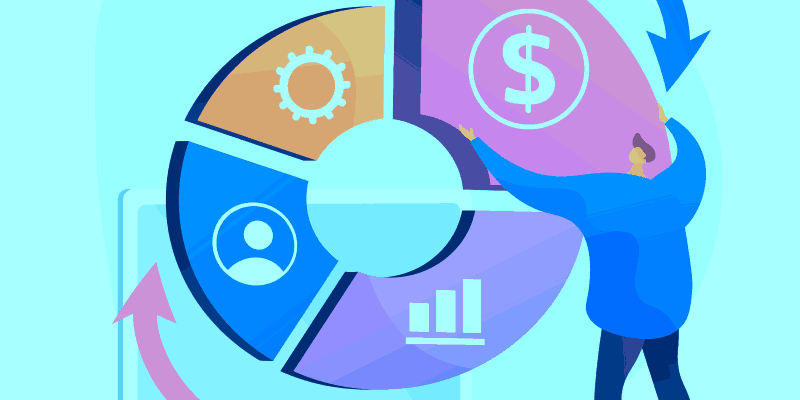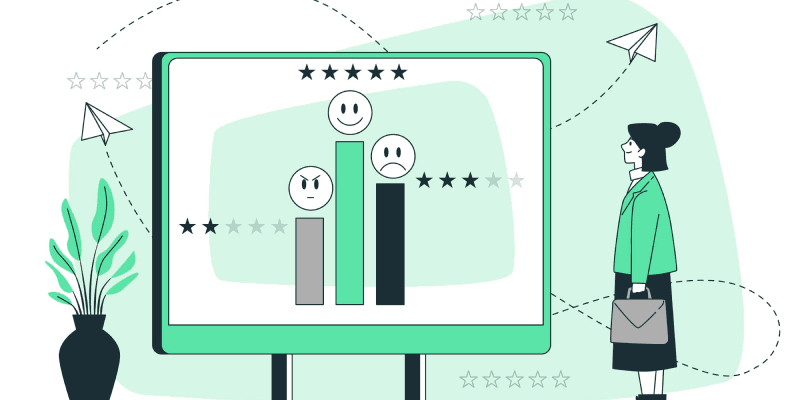What is Retention Rate: A Complete Guide

SaaS thrives on ongoing relationships, where delivering value and ensuring continuously high levels of satisfaction are vital for revenue growth and sustainability. Ultimately, when it comes to long-term success, holding onto your customers can be more important than acquiring them. For that reason, you should know what is the retention rate so you can be on the lookout.
All elements that make up a successful SaaS business contribute to high levels of retention. If elements of your product, product-market-fit, go-to-market strategy, or post-sales engagement are off, retention will drop and your business will suffer.
In the following article, we will navigate the importance of customer retention, explore strategies that can improve the customer retention rate, and explain the difference between the comprehensive customer retention rate and the raw customer retention rate. Let’s go!
What is the Retention Rate?
The Customer Retention Rate (CRR) measures the percentage of customers retained by a company within a specific period.
If your company has high retention rates, it means that it successfully retained a significant part of its customer base, which is crucial in SaaS. In this case, your customer retention strategies are effective, and loyalty is preserved and/or improved.
On the other hand, a low retention rate may signal dissatisfaction, a lack of product value, or issues with the offering that need to be addressed as soon as possible to prevent churn and ensure revenue growth. Sometimes, a slightly adjusted customer retention strategy can have a huge impact on customer satisfaction!
If you’re interested in learning about the cost, check out our article on customer retention costs.
How to Calculate the Retention Rate?
The customer retention rate formula includes several key steps:
- Choose a time frame: The usual practice includes monthly, quarterly, or annually.
- Count the number of customers at the start (S) and the end of the given time frame (E):
- At the end, determine the number of new customers for the given period (N).
Now that you have the data, you can start calculating the formula – [(E-N)/S] x 100 = CRR.

Retention Rate vs. Raw Retention Rate
What is raw customer retention? Although the customer retention rate and raw customer retention rate definition might seem the same, there are certain key differences between these two metrics.
Raw customer retention rate is, as its name implies, a more basic calculation that measures the number of customers retained without accounting for external factors like customer acquisition and lost customers (churn). On the other hand, the customer retention rate includes both of the given factors and the nuances of customer behaviour. This is what makes it a more refined and comprehensive measurement.
Therefore, the raw customer retention rate focuses solely on retained customers without accounting for other factors, while the customer retention rate involves a deeper analysis that considers various factors related to customer retention and attrition.
Now that we have clarified the raw customer retention definition, let’s see how to calculate the raw customer retention rate.
- Again, determine the period for which you want to calculate the war retention rate (month, year).
- Count the number of customers you had at the start (S) and the end (E) of the given period.
- Divide E with S
- Multiply by 100

How to Improve User Retention Rate?
Personalization is crucial to retention. Make sure to tailor user experiences based on behaviours and preferences and offer customizable features and settings that adapt to individual user’s needs. Implement personalized and targeted communication strategies through emails and newsletters to keep users engaged and informed about product updates and helpful tips.
Solicit and use feedback to understand pain points, and make sure to continually refine the service or product based on the input to enhance its usability. Implement various customer success and loyalty programs that reward your customers but also help them reach their goals with your platform.
Finally, make sure to monitor and analyze retention metrics to identify at-risk users or segments and proactively engage to prevent churn. In case you’re looking for a tool for these processes, check out our list of best customer retention platforms.
What is a Good User Retention Rate?
In SaaS, a good user retention rate goes around 90% or higher on a monthly basis. Still, it is difficult to define a “good” retention rate without taking multiple factors into account, like company size, target market and competition, stage of the business, pricing model, and others.
There are a few guidelines that can help you define what makes a good retention rate for your specific situation.
Why is Customer Retention Rate So Important to Track?
When you track the customer retention rate consistently over various periods, you gain valuable insights into customer satisfaction and can easily assess the effectiveness of existing customer retention strategies. Then, you can create new ones that will address the needs and preferences of specific customer segments and understand the overall health of your customer base. Therefore, we can conclude that customer retention rate is crucial to improving customer loyalty and sales and, of course, reducing churn.
First, compare your retention rates against industry benchmarks to see how you stand in the sector. Then, make sure to perform cohort analysis by using customer segmentation tools like Akita. Akita allows you to perform customer segmentation based on any trait you find crucial, track their activities and behaviour, and get visualized data. When obtaining comprehensive customer data and streamlining it into a single platform, you can easily understand each customer’s needs and preferences and adapt your retention strategies to fit them entirely. This is an effective way to tailor a personalized approach to each customer, which can lead to improved customer satisfaction, loyalty, and retention.
Finally, make sure to understand your unique business context and market dynamics. This is how you can set realistic expectations for your retention goals!
Can CSPs like Akita Help Maintain High Retention Rates?
Yes! Akita retains all of your key customer data and metrics, ensuring you can identify potential problems across multiple data points and therefore create a real-time list (segment) of your most at-risk customers.
In the example below, the following criteria have been combined, in the form of filters, to identify at-risk customers:
- User Logins have dropped in the last 7 days
- CSAT (company) < 30%
- NPS (Company) < 0
- Agent Intuition (CSM) Score = Poor

Once you know your at-risk customers, you can directly engage them to mitigate the risk, or you can use Akita’s automated playbooks feature to manage this process for you.
What is the Retention Rate? — Conclusion
Customer retention is a focal point in any SaaS business, representing the culmination of exceptional experiences, consistent value delivery, and a profound understanding of customer needs. Use Akita to gain this understanding with its high-edge segmentation options and create and implement superior retention strategies that foster loyalty, strengthen brand advocacy, and ensure consistent business growth and revenue.
Frequently Asked Questions
What insights does the raw customer retention rate offer in SaaS?
Raw CRR provides a basic understanding of customer retention within a given period, excluding external factors that could influence retention.
How often should the retention rate be measured and analyzed?
It is recommended to track CRR regularly to identify patterns, monitor trends, and evaluate the impact of current customer retention strategies. This is how you can always remain informed about the effectiveness of your customer retention strategies and modify them as you go, if necessary.
What role does the custom retention rate play in predicting revenue and growth in SaaS?
Due to the recurring nature of subscription-based models, a high CRR indicates a more predictable revenue stream and lays the foundation for sustained growth.








